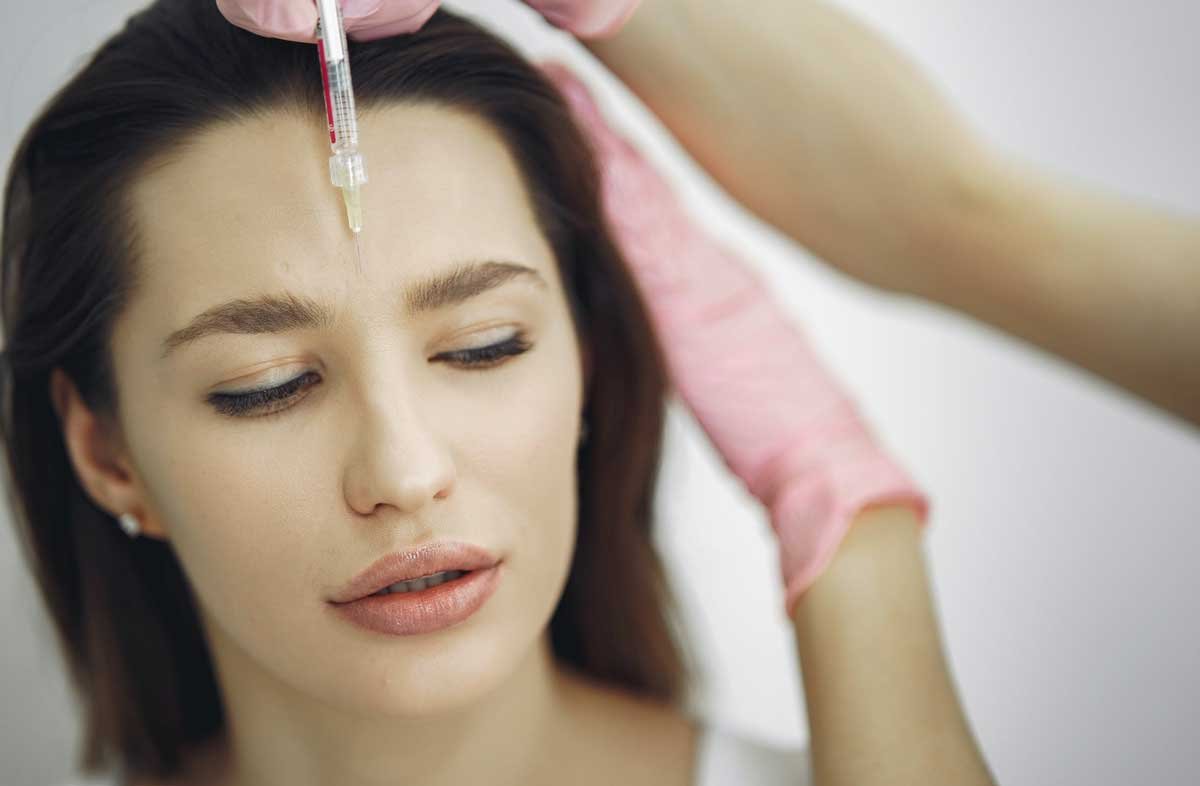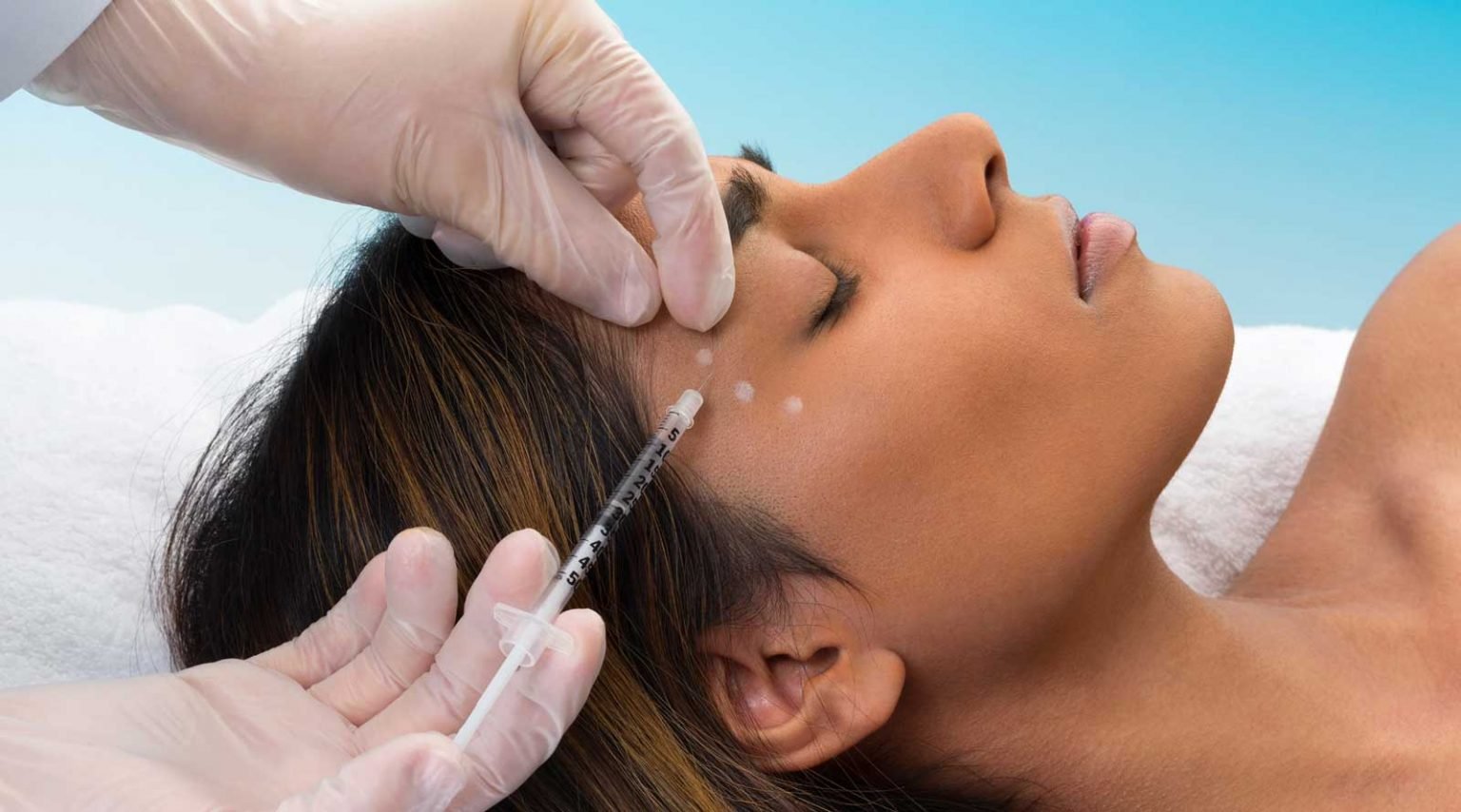A Botox treatment procedure is minimally invasive. It is regarded as a risk-free, beneficial treatment for fine lines and wrinkles all-around the eyes. It may also be applied on the forehead between the eyes is called BOTOX Forehead. Botox injection was originally FDA approved in 1989 for the treatment solution of blepharospasm and other eye muscle issues.
In 2002, the FDA permitted the use of Botox as a cosmetic treatment solution for moderate to severe frown lines between the eyebrows. Botox is a very simple, secure, and successful treatment for lowering forehead wrinkles. That is why; Toronto Botox is offering this treatment right here in Toronto.
What Is Botox?
Botox is an injectable drug produced from botulinum toxin type A. This particular toxin is developed by the bacterium Clostridium botulinum. Botox injections are mentioned mainly for the capability to decrease the visual appearance of facial wrinkles.
These are additionally applied to treat problems such as neck spasms (cervical dystonia), extreme sweating (hyperhidrosis), an overactive bladder, and lazy eye. Botox injections can also support prevent chronic migraines. When injected by torontobotox.com, Botox prevents signals from your nerves to your muscle tissues.
This avoids the specific muscle tissues from contracting, which can ease specific muscular conditions and enhance the visual appearance of fine lines and wrinkles. For Orlando botox specialists, be sure to consult Aesthetic Lane for their professional botox services

How Is It Used?
Botox is usually recognized for its capability to minimize the visual appearance of wrinkles and fine lines. Just for an example of this, Botox injections can relax the muscles that cause: crow’s feet, or wrinkles that seem at the outer corner of the eyes, frown lines between the eyebrows, forehead creases. It is also applied to treat underlying muscular situations. This includes:
- Lazy eye
- Eye twitching
- Chronic migraines
- Neck spasms (cervical dystonia)
- Overactive bladder
- Excessive sweating (hyperhidrosis)
- Certain neurological conditions, such as cerebral palsy
How Does It Work?
Botox is actually a neurotoxin. These ingredients focus on the nervous system, disrupting the nerve signaling procedures that stimulate muscle contraction. This is exactly how the drug leads to short-term muscle paralysis. In order for any muscle to contract, the nerves relieve a chemical substance known as acetylcholine at the junction just where nerve endings meet muscle cells. Acetylcholine connects to receptors on the muscle cells and leads to the cells to contract, or shorten. Botox injections stop the discharge of acetylcholine that stops the muscle cells from contracting. In this way, the toxin assists the muscles to turn out to be less stiff.
How Is a Botox Procedure Done?
Clinicians work with Botulinum toxin by diluting the powder in saline and injecting it immediately into neuromuscular tissue. It requires 24-72 hours for the toxin to have an effect. Hardly ever, it may take as long as 5 days for the full effects to show clearly. They may last 3-12 months, based on the treatment method.
When It Should Not Be Used?
Individuals must stay away from using Botox during pregnancy or breastfeeding, or if they have ever had a sensitive reaction to the drug or any of its substances.
How Long Does a Botox Shot Last?
The actual effects of Botox may last 3 to 6 months. As muscle activity gradually returns, the lines and wrinkles start to come back again and will need to be treated once again. The lines and wrinkles frequently appear less severe with time simply because the muscles are shrinking.
What Are the Side Effects to Watch For?
Although Botox injections are comparatively secure, minimal side effects are possible. All those include: pain, swelling, or bruising at the injection site, headache, fever, chills. Several side effects are tied to the spot of injection. Just for an example of this, if you have injections in the eye area, you may experience: drooping eyelids, uneven eyebrows, dry eyes, excessive tearing. Injections close to the mouth area may result in a crooked smile or drooling.
Temporary Effects
Almost all side effects are generally temporary and should disappear within a few days. Nevertheless, drooping eyelids, drooling, and asymmetry are all generated by the unintentional effects of the toxin on muscles encircling the target areas of the drug, and all these side effects may take a few weeks to improve as the toxin wears off.
Who Should Not Get Botox?
Persons who are pregnant, breastfeeding, or have a neurological condition should not apply Botox. Because Botox does not work for all wrinkles, check with a medical professional first. You should never have Botox shots if you are allergic to cow’s milk protein.
Botox Procedure
Why It’s Done
Normally, Botox injections block specific chemical signals from nerves, mainly signals that lead to muscles to contract. The most popular use of these injections is to momentarily calm down the facial muscles that lead to wrinkles in the forehead and also around the eyes. Botox injections are also applied to treat situations that affect how the body performs. Examples include:
Cervical Dystonia
In this unpleasant situation, your neck muscles contract involuntarily leading to your head to twist or turn into an unpleasant position.
Lazy eye
The most frequent cause of lazy eye is an imbalance in the muscles accountable for placing the eye.
Lazy eye
Muscle Contractures
Some neurological situations, such as cerebral palsy, may cause your limbs to pull in toward your center. In some cases, these types of contracted muscle tissues can be relaxed with Botox injections.
Hyperhidrosis
In this situation, extreme sweating happens even when the temperature is not hot and you are not exerting yourself.
Chronic Migraine
If you experience migraines more than 15 days a month, Botox injections can help decrease headache frequency.
Bladder Dysfunction
Botox injections may also help decrease urinary incontinence caused by an overactive bladder.
Eye Twitching
Botox shots may help relieve contracture or twitching of muscles around the eye.
Select Your Doctor Carefully
Botox should be applied only under a doctor’s care. It is essential that injections be positioned exactly in order to prevent side effects. Botox therapy can be risky if it is administered improperly. Ask for a recommendation from your primary care medical doctor or look for a medical professional who specializes in your situation and who has practical experience in applying Botox treatments. An experienced and properly certified medical professional can advise you on the process and help determine if it best fits your needs and health.
How You Prepare
Tell your medical professional if you have had any type of Botox injection within the previous four months. Additionally tell your medical doctor if you take muscle relaxants, sleeping aids or allergy medicines. If you take blood thinners, you may have to stop having them a few days before your injection to decrease your possibility of bleeding or bruising.
What You Can Expect
Before the Procedure
Most people do not feel significant discomfort throughout the process. However, you may want your skin numbed in advance, particularly if your palms or soles are being treated for extreme sweating. Your medical doctor might use one or more of several techniques available to numb the area, such as topical anesthesia, ice, and vibration anesthesia, which uses massage to decrease discomfort.
During the Procedure
Botox injections are typically carried out in a doctor’s office. Your medical doctor works by using a thin needle to inject tiny amounts of botulinum toxin into your skin area or muscles. The number of injections required will depend on many aspects, including the extent of the area being treated. Botox shots are normally done in a doctor’s office.
After the Procedure
Do not rub or massage the treated spots for 24 hours. This may help avoid the toxin from spreading to various areas. You can come back to your regular routines right after the process.
Results
Botox injections normally start functioning one to three days after treatment. Based on the issue being treated, the result may last three months or longer. To sustain the effect, you will need usual follow-up injections.

